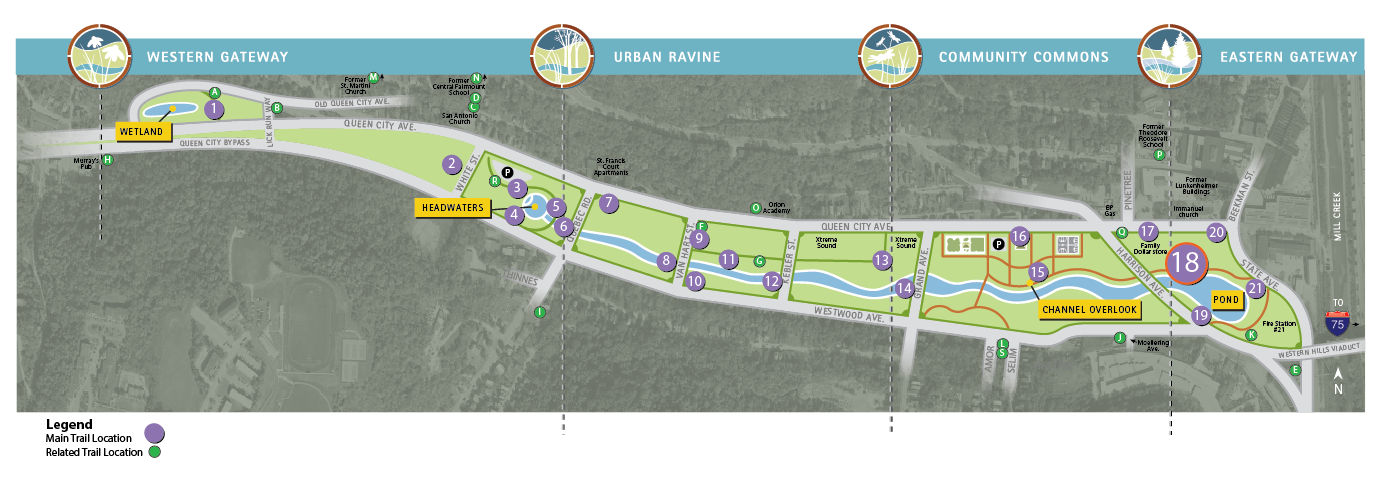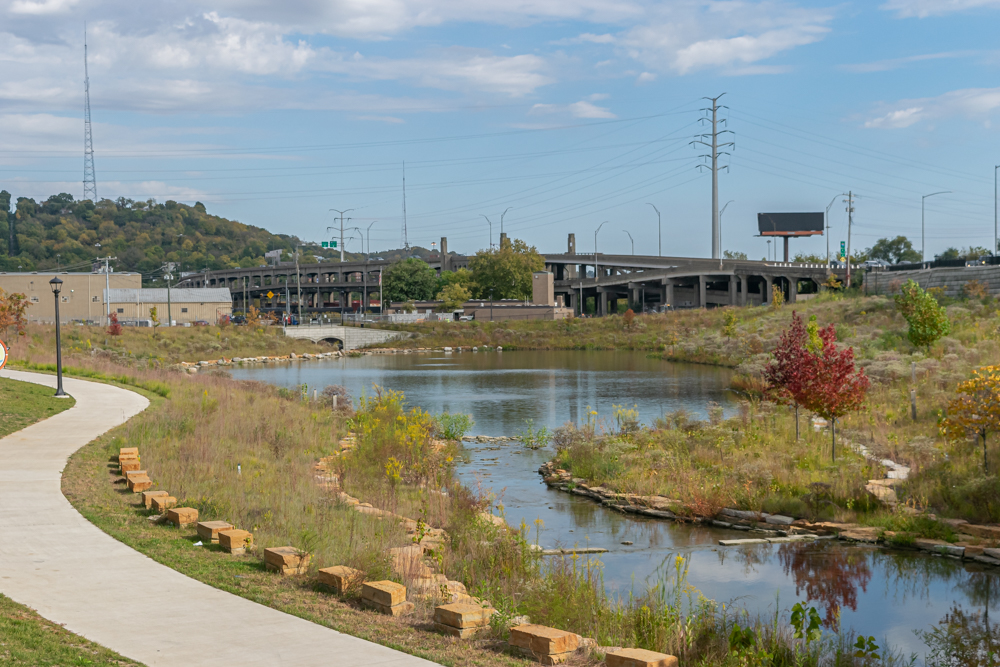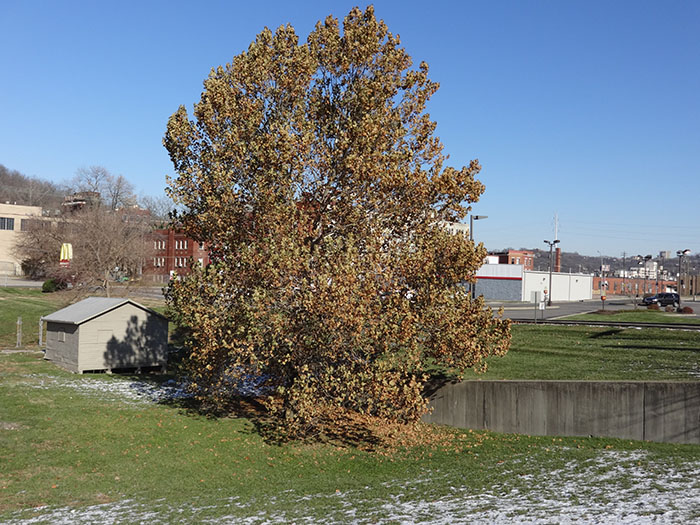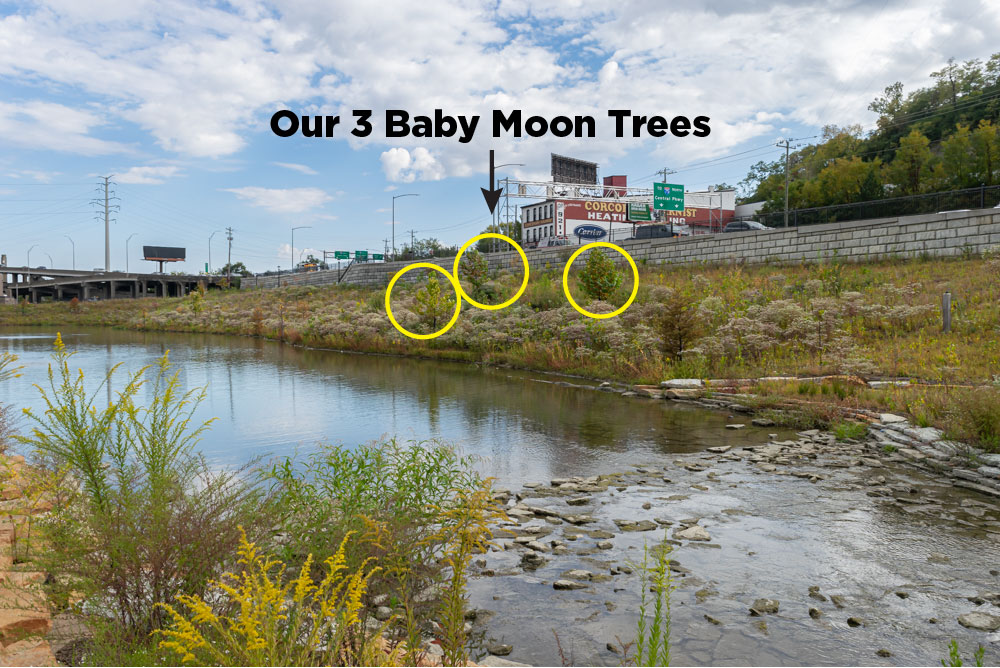Trail Location 18: The Pond (north side)

Walking Tour? VIEW THE TRAIL LOCATION IN GOOGLE MAPS >
THE POND (NORTH SIDE)
Located east of Harrison Avenue, the pond is the last stop for rainwater on its way to the Mill Creek.
The purpose of the pond is to clean the rainwater one last time before it enters the Mill Creek. Designed to mimic a natural pond, it helps remove sediment from the rainwater.

WHAT CAN YOU SEE?
- Pond: The pond is about 2 acres in size and about 10 feet deep at its deepest point. The deeper part of the pond removes sediments and excess nutrients that are harmful to fish and other animals that live in the water.
- Native Plants: Plants along the shallow sides of the pond absorb pollutants and provide habitat for many organisms.
- Habitat: The pond creates an important habitat for native plants and animals. Many migrating birds fly over this area, so the pond will provide a good resting spot during their journey. Canada geese have already made the pond their home.
- Recirculation: During dry weather, water from the pond is recirculated to the Headwaters. Otherwise, this stream, like many natural creeks in the area, would run dry much of the year.
- Outfall: At the northeast corner of the pond, there is an outfall structure. When the water level in the pond rises, the pond passively overflows through this structure and into the underground stormwater conveyance box. The outfall into the Mill Creek is about 250 feet to the east of the pond.


In 1971, NASA astronaut Stuart Roosa carried about 500 tree seeds into space as part of the Apollo 14 mission to the moon. Once the mission returned, the seeds were germinated by the U.S. Forest Service and planted across the country. Trees grown from these seeds were known as "moon trees." Later, cuttings from many of the original moon trees were planted and distributed as second-generation moon trees.
A second-generation Sycamore moon tree was planted in South Fairmount in 1992 by an avid local astronomer who also owned a paper products company in the neighborhood. Due to its location, the tree was removed to make way for the Lick Run Greenway pond. But Lagergren Nursery in Hamilton, Ohio, took cuttings from the tree and cloned baby moon trees.

To focus attention on the importance of trees and renewable resources, three of the cloned Sycamore trees were planted on the south side of the pond just east of the Harrison Avenue bridge. Watch those babies grow!
